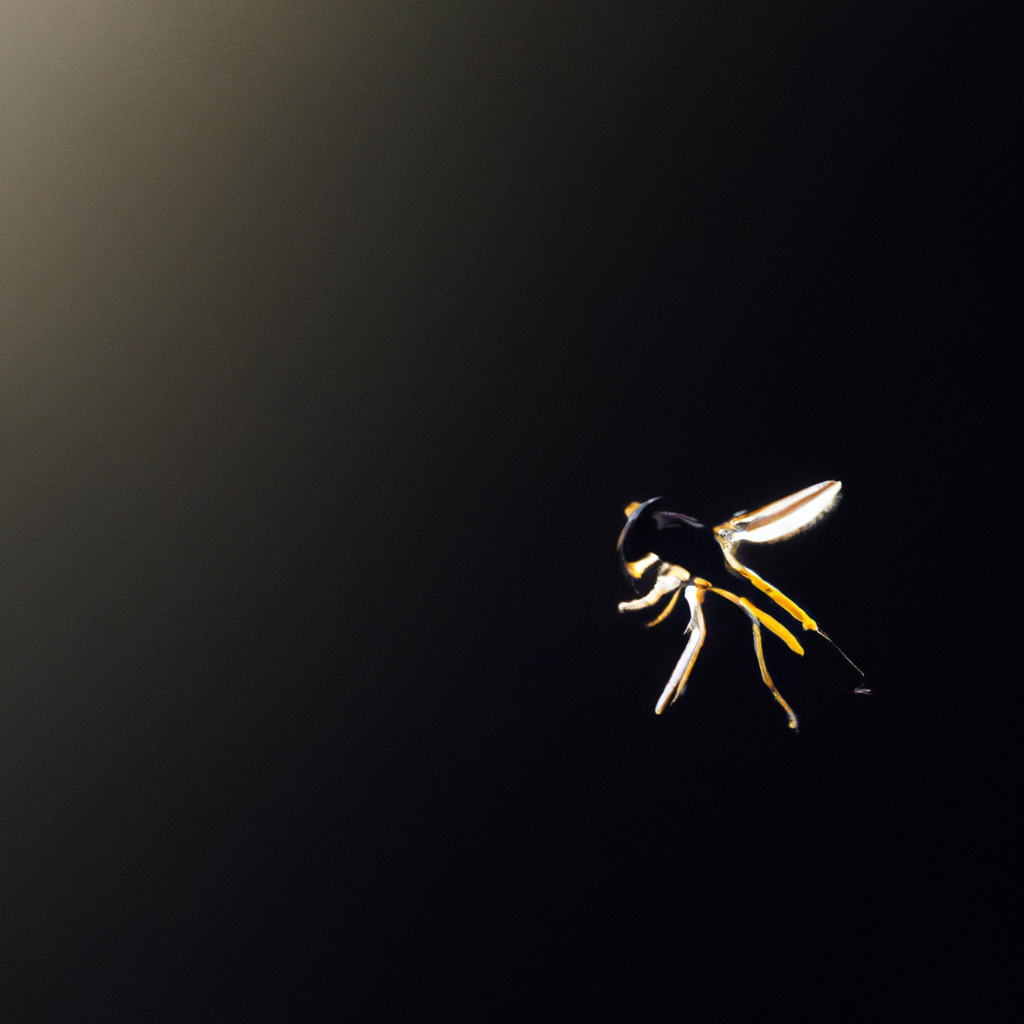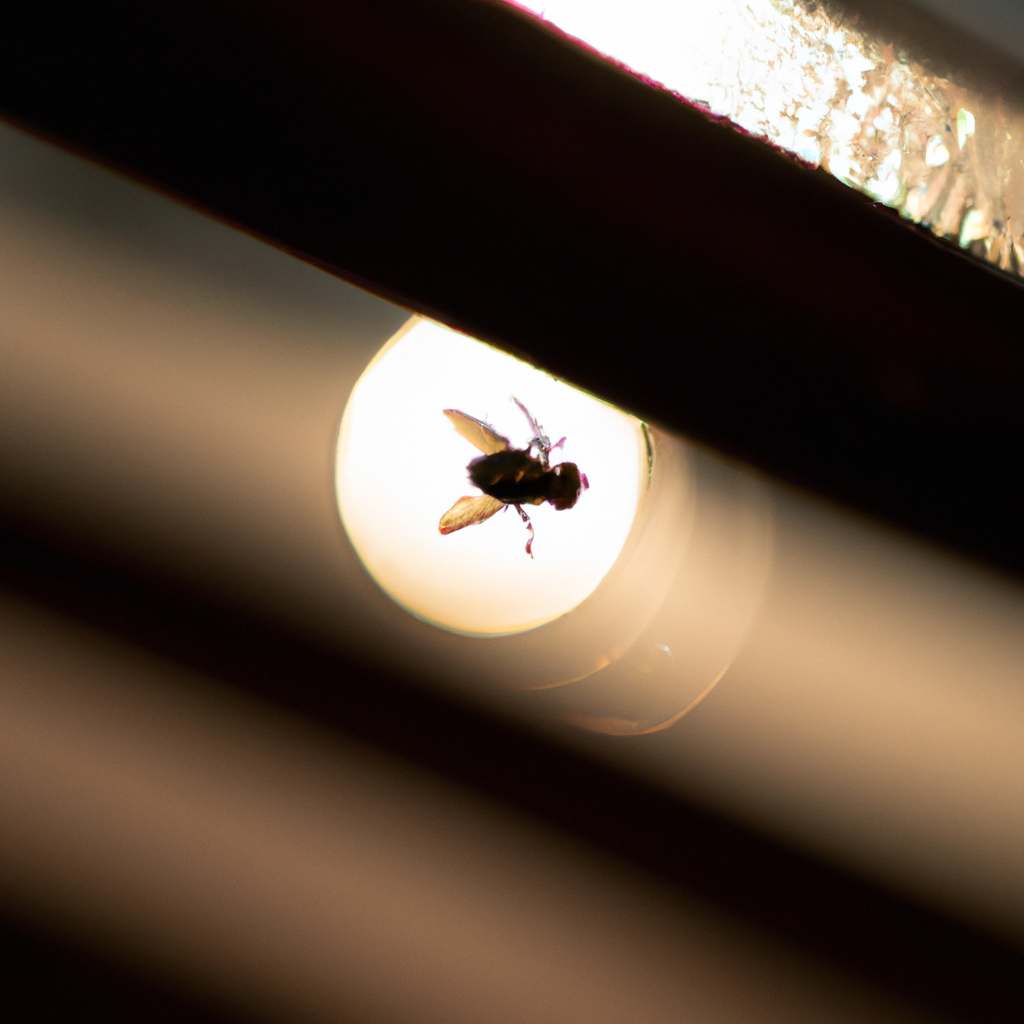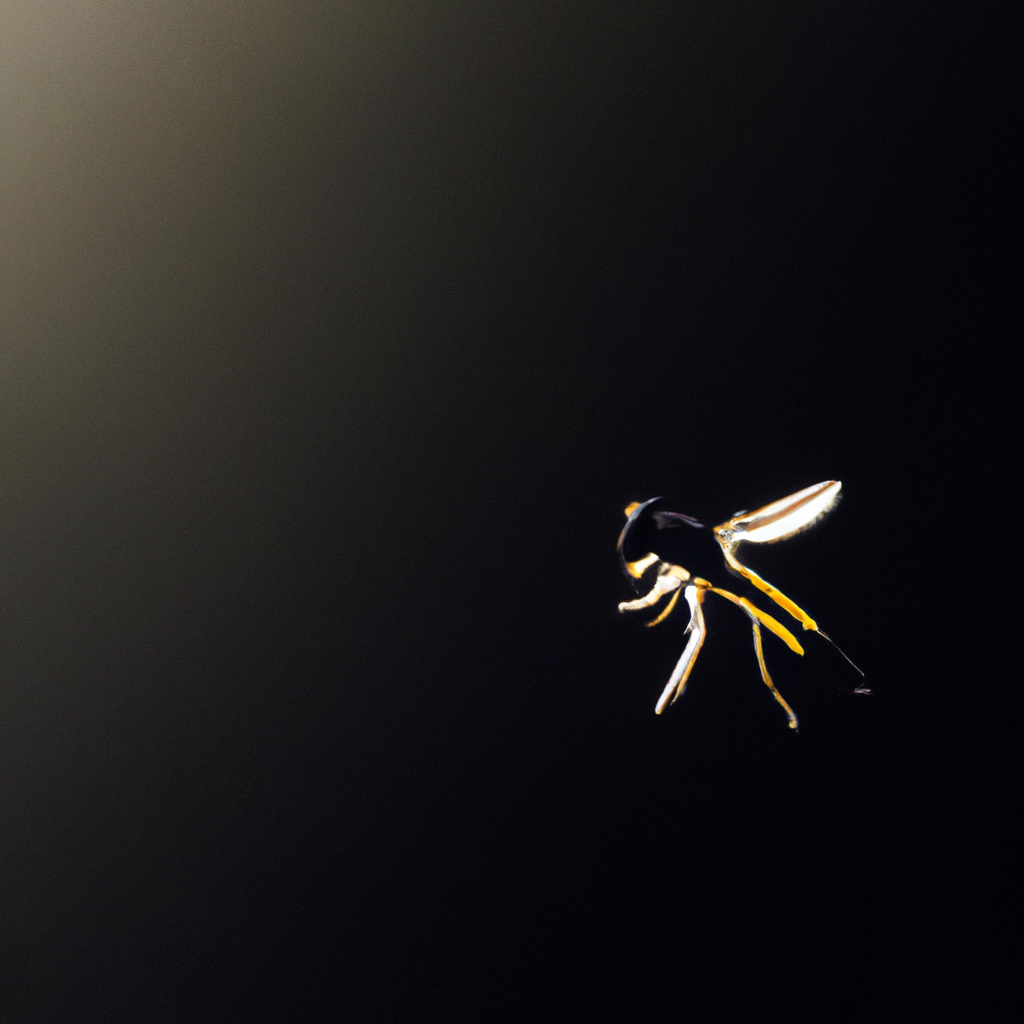Have you ever found yourself perplexed as to why flies seem to be constantly swarming around you? It’s a mystery that has puzzled many, and in this article, we aim to shed some light on this common occurrence. From exploring the reasons behind their attraction to humans to discussing preventive measures, we’ll uncover the secrets behind the presence of these pesky insects. So, if you’re tired of constantly shooing away flies, stick around and discover the answers you’ve been searching for.

The Life Cycle of Flies
Egg Stage
Flies start their lifecycle as eggs. Female flies lay their eggs in a suitable environment, such as decaying organic matter or animal waste. These eggs are often very small, and you may not notice them unless you carefully inspect the breeding grounds. They usually hatch within a day or two, depending on the temperature and other environmental factors.
Larval Stage
After the eggs hatch, the larvae emerge. These larvae, often referred to as maggots, are the feeding stage of flies. They are usually white, legless, and cylindrical in shape. This stage is crucial for the development of flies as they feed voraciously on the available organic material. It typically lasts for several days, during which maggots molt and grow in size.
Pupal Stage
Once the larvae complete their growth, they enter the pupal stage. In this stage, the larvae transform into pupae enclosed in hard capsules known as puparia. Inside the puparia, significant changes occur as the maggot’s body undergoes a remarkable transformation and develops into an adult fly.
Adult Stage
After completing the pupal stage, adult flies emerge from the puparia. At this stage, flies are fully grown and ready to reproduce. Adult flies have two wings and six legs, which they use for flying and seeking out suitable environments for laying eggs. They typically live for a few weeks, during which time they mate and continue the life cycle by laying eggs.
Attractants for Flies
Food and Odors
Flies are constantly seeking sources of food, and the presence of food and food odors is a significant attractant for them. They are especially drawn to sugary and decaying substances. When you leave exposed food or a dirty kitchen, flies will be attracted to the smell and may swarm around your food or garbage.
Moisture and Standing Water
Flies require moisture for their survival and reproduction. Any area with standing water, such as leaky pipes, wet garbage, or stagnant ponds, can attract flies. They are particularly drawn to areas with high humidity, as it provides an ideal environment for their eggs to hatch and larvae to thrive.
Garbage and Filth
Flies have a strong affinity for filth and decaying matter. Garbage cans, dumpsites, and rotting organic waste are highly attractive to flies. The odor emitted from these sources of filth acts as a powerful attractant and can lead to a significant infestation.
Dung and Animal Waste
Flies are notorious for their attraction to animal waste, including feces and urine. They are particularly drawn to such environments because they use animal waste as a food source and a suitable breeding ground. Livestock farms, stables, and even pet waste can all be magnets for flies.
Decaying Organic Matter
Flies find decaying organic matter incredibly appealing. This includes dead animals, compost piles, and decaying vegetation. The decomposition process releases odors that act as a beacon for flies, signaling the presence of a potential food source and a place to lay their eggs.
Flies and Human Health
Disease Transmission
Flies are not just bothersome pests; they can also pose a threat to human health. Due to their attraction to unsanitary environments, flies can pick up disease-causing pathogens from filth and then transmit them to human food or surfaces. Some of the diseases associated with flies include salmonellosis, cholera, and various parasitic infections.
Allergic Reactions
In some individuals, flies can trigger allergic reactions, leading to symptoms like skin rashes, itching, and sneezing. These reactions could occur due to a fly’s saliva or feces coming into contact with sensitive skin or getting inhaled.
Harmful Bacteria
Flies can carry harmful bacteria on their bodies, which can contaminate the surfaces they land on. This poses a significant risk, especially in settings like hospitals or restaurants, where proper hygiene is crucial. Bacteria such as E. coli and Staphylococcus aureus can be transmitted by flies, potentially causing serious illnesses in humans.
House Flies vs. Other Fly Species
House Flies
House flies, scientifically known as Musca domestica, are the most common species of flies found indoors. They are generally gray in color and slightly larger than fruit flies. House flies are attracted to a wide range of food sources and can breed rapidly in unsanitary conditions.
Fruit Flies
Fruit flies, also called vinegar flies, are small, light-brown flies often found near ripe or decaying fruits and vegetables. Unlike house flies, they are relatively harmless and typically do not transmit diseases. However, their presence can be quite bothersome and an indicator of poor sanitation in kitchens or pantries.
Drain Flies
Drain flies, sometimes called moth flies, are small, fuzzy insects that are commonly found near drains or other moist areas. Their larvae feed on decaying organic matter that accumulates in drains, making them a common sight in bathrooms and kitchens. While drain flies are not known to spread diseases, their presence can be a sign of underlying plumbing issues.
Cluster Flies
Cluster flies are large, dark-colored flies that tend to seek shelter indoors during colder months. They get their name from their habit of clustering together in large numbers. These flies are not harmful and do not reproduce indoors but can be a nuisance when they gather in significant numbers.
Blow Flies
Blow flies, also known as bottle flies, are typically metallic blue or green in color. They are attracted to decaying flesh and can often be found near dead animals or pet waste. Blow flies play a crucial role in decomposition, but their presence indoors should be addressed to prevent the spread of bacteria and odors.

Preventing Fly Infestations
Cleanliness and Sanitation
Maintaining cleanliness and practicing good sanitation is crucial in preventing fly infestations. Regularly clean your living areas, paying attention to spills, crumbs, and food residues. Keep your kitchen and garbage cans clean, wipe down surfaces regularly, and promptly clean up any pet waste.
Proper Waste Management
Proper waste management is vital in minimizing fly infestations. Ensure that garbage bins have tightly fitting lids to prevent flies from accessing the contents. Dispose of trash regularly and maintain cleanliness in outdoor areas where garbage is stored. Composting should also be done in a controlled manner to reduce the attractiveness to flies.
Sealing Entry Points
To prevent flies from entering your home, it is important to seal any openings that could serve as entry points. Check windows, doors, and screens for any gaps or cracks, and repair or replace them as needed. Pay attention to areas around pipes, vents, and utility entrances, as they can also be potential entry points for flies.
Using Fly Traps and Traps
Fly traps and sticky papers can be effective tools in controlling fly populations. These traps can be placed in areas where flies are most active, such as kitchens or outdoor patios. Fly traps use attractants or pheromones to lure flies into the trap, preventing them from roaming around your living spaces.
Fly Control Strategies
Chemical Control
Chemical control methods involve the use of insecticides to kill flies or hinder their growth and reproduction. These methods should be used with caution, following the instructions on the product labels, and considering the potential risks to human and animal health.
Biological Control
Biological control methods utilize natural enemies of flies, such as parasitic wasps or nematodes, to keep fly populations in check. These biological agents can be introduced into the environment to target and control fly populations without the use of chemicals.
Mechanical Control
Mechanical control methods involve physically preventing or excluding flies from areas where they are not wanted. This can be achieved through the use of fly screens on windows, doors, or vents. Additionally, fans can be utilized to create airflow that discourages flies from settling in specific areas.
Cultural Control
Cultural control methods involve implementing practices that discourage fly population growth. These include proper waste management, regular cleaning and sanitation, and removing potential breeding grounds such as standing water or decaying organic matter. By disrupting the fly’s life cycle, cultural control methods can be highly effective in reducing fly infestations.
Natural Fly Repellents
Essential Oils
Many essential oils are known to repel flies due to their strong fragrances. Peppermint, eucalyptus, lavender, and lemongrass essential oils are commonly used to deter flies. These oils can be diluted in water and sprayed around your living spaces or used in diffusers to create an unpleasant environment for flies.
Herbs and Plants
Certain herbs and plants possess natural fly-repelling properties. Planting basil, rosemary, mint, or marigold can help keep flies at bay. You can also hang bouquets of dried herbs in areas where flies are a problem to deter their presence.
Candles and Incense
Using candles or incense with scents that flies find unpleasant can be an effective way to keep them away. Citronella candles are particularly known for repelling flies and other insects. However, it is important to use these methods with caution and in well-ventilated areas to prevent fire hazards.
Citrus Peels and Fragrances
Flies are repelled by the strong scent of citrus. Placing orange or lemon peels near areas where flies congregate can deter their presence. Additionally, citrus-scented cleaning products or air fresheners can be used to create a less attractive environment for flies.
Fly Repellent Recipes
There are various DIY fly repellent recipes available that use natural ingredients. These recipes often combine essential oils, vinegar, or other fly-deterring substances to create sprays or repellents. However, it is important to note that the effectiveness of these homemade solutions may vary.
Dealing with Flies Outdoors
Essential Outdoor Maintenance
Regular outdoor maintenance can go a long way in preventing fly infestations. Keep your outdoor living spaces clean and free from debris, especially where food is consumed. Trim vegetation regularly to minimize fly attractants like decaying organic matter. Properly maintain swimming pools and birdbaths to prevent standing water.
Alternative Fly Control Options
Various alternative fly control options are available for outdoor use. These include fly traps, insecticides, and bait stations designed specifically for outdoor environments. It is important to choose products that are suitable for outdoor use and follow the instructions carefully to ensure effectiveness and safety.
Creating Fly-Free Zones
If you frequently spend time outdoors and want to create fly-free zones, you can use physical barriers like mosquito nets or screen enclosures. These can be especially useful for patio areas or outdoor dining spaces, providing a protected environment where flies and other insects are kept at bay.
Breeding Ground Elimination
Eliminating potential breeding grounds is crucial in preventing fly populations from multiplying. Properly maintain compost piles, ensuring they are covered and not excessively wet. Regularly clean up pet waste from your yard and keep garbage cans tightly sealed to discourage flies from laying eggs in these areas.
DIY Solutions for Indoor Flies
Fly Traps and Sticky Papers
Fly traps and sticky papers can also be used indoors to catch and control flying insects. These traps can be strategically placed in areas where flies are more likely to be found, such as near windows, garbage cans, or doorways. They work by attracting flies to the trap and preventing them from flying away.
Light Traps
Light traps, also known as fly zappers, are devices equipped with ultraviolet lights that attract flies and other flying insects. When the insects come into contact with the electric grid, they are electrocuted. Light traps can be effective in reducing fly populations, but they should be placed away from areas where people congregate due to the sound or mess that can occur when flies are zapped.
Electronic Bug Zappers
Electronic bug zappers use light and electric shock to kill flies and other flying insects. These devices attract flies with UV light and then electrocute them upon contact. Like light traps, they should be placed away from areas where people gather to avoid any disturbances. It is important to note that bug zappers can also attract and kill beneficial insects and are not recommended for indoor use.
Homemade Fly Spray
Homemade fly sprays can be made using a mixture of water, vinegar, essential oils, or even dish soap. These sprays can be applied directly to flies or sprayed around areas where flies frequent. While homemade sprays can be effective in repelling flies, their effectiveness may vary, and they may need to be reapplied frequently.
Common Mistakes to Avoid
When dealing with indoor flies, it is important to avoid certain mistakes that can hinder your efforts. Leaving food uncovered or letting dirty dishes accumulate can attract flies. It is also essential to address the root cause of the problem, such as identifying and eliminating breeding sources. Additionally, using excessive amounts of pesticide indoors can pose health risks and should be avoided.
Seeking Professional Help
Professional Extermination Services
Professional extermination services can be a viable option for severe or recurring fly infestations. These services employ trained professionals who can assess the extent of the infestation and implement appropriate control measures. They often use a combination of chemical and non-chemical methods to eliminate flies effectively.
Pest Control Companies
Pest control companies specialize in the management and control of various pests, including flies. They can provide comprehensive solutions tailored to your specific needs. When choosing a pest control company, consider their experience, reputation, and the use of environmentally friendly or integrated pest management approaches.
Hiring an Exterminator
Hiring an exterminator who specializes in fly control can be a practical choice for addressing persistent or complex infestations. Exterminators have in-depth knowledge of fly biology and behavior, allowing them to develop effective strategies for eradication. They can also provide guidance on preventive measures to minimize future infestations.
Costs and Benefits
The costs associated with professional fly control services or exterminators can vary depending on the extent of the infestation and the size of the property. However, investing in professional help can save you time, effort, and potential health risks, especially for severe or recurring fly problems. It is advisable to obtain multiple quotes and compare the services offered before making a decision.




